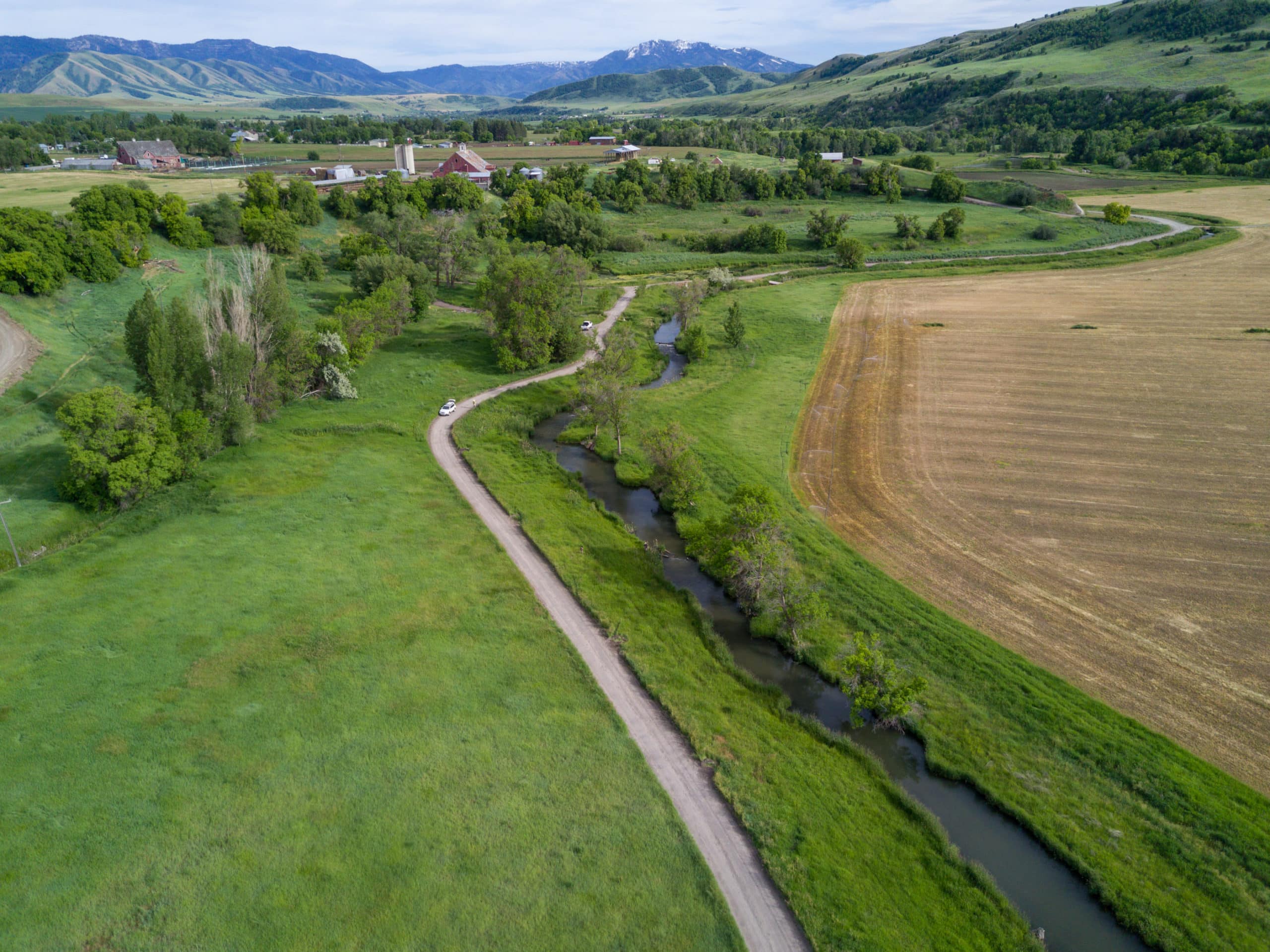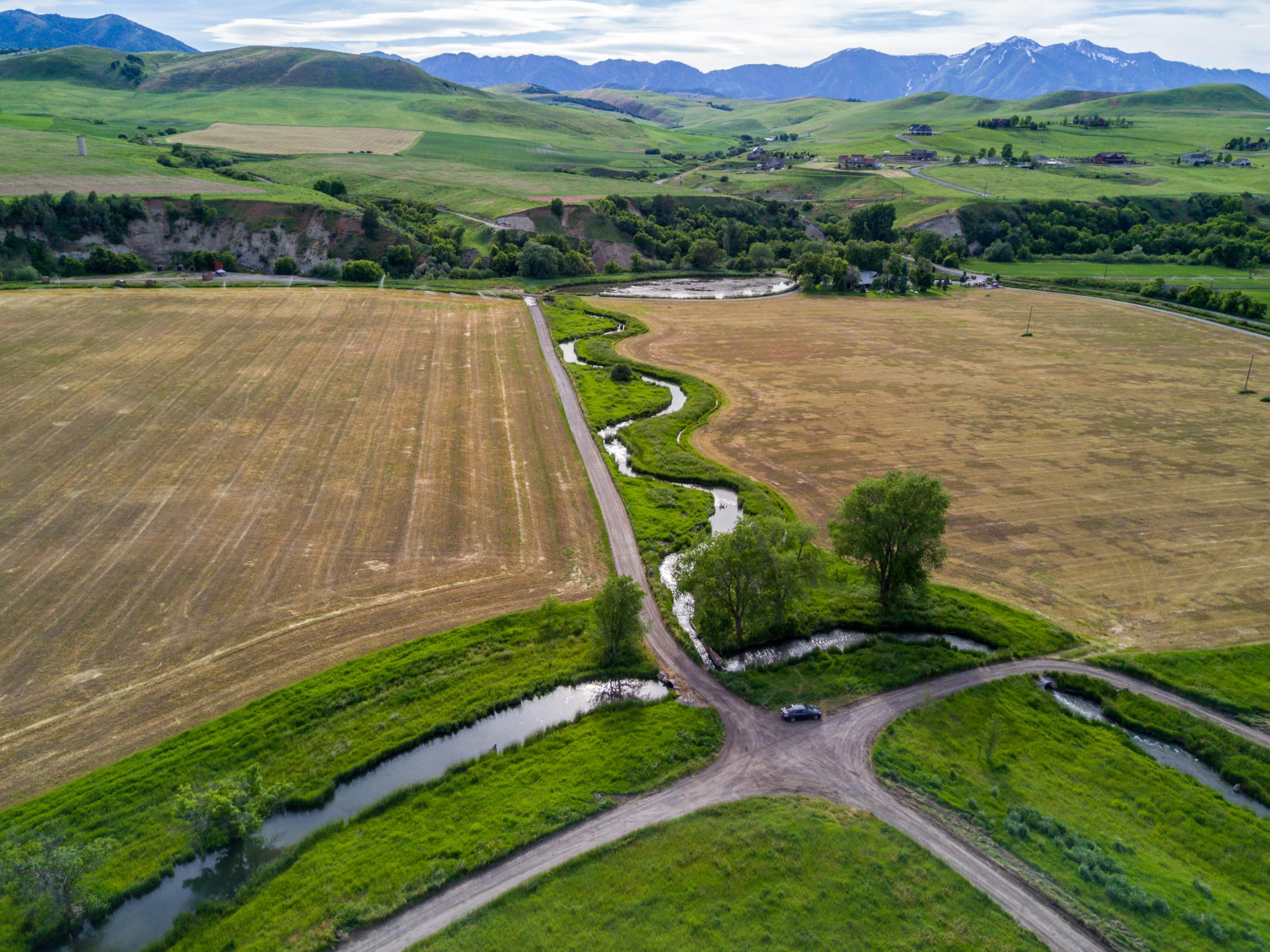
Whites Ranch in Paradise, Utah was settled in 1868 by Barnard White an immigrant from England. This was one of the first settlements in the beautiful Cache Valley. The homestead, approximately 56,000 acres, was located in the southeast corner of Cache Valley consisting primarily of mountain property.

The Ranch House, stables and creamery were located on a bluff overlooking the fertile river bottoms of the Little Bear River. This location was chosen because of its isolation and vantage point to overlook the valley. Remembering, of course that the west was still unsettled in the mid 1800’s and the Native Americans were still formidable neighbors. Another reason for choosing this location was the abundant springs located just below the bluff line where the Ranch House stood; as a year round water supply was paramount to any settlement in those years for the livestock and the settlers.
Over the years and through the generations, this working ranch has produced cattle, hogs, turkeys, milk, crops and rainbow trout. Today this working ranch produces cattle, crops, trout, pheasants and partridge. The fourth generations working the ranch are Grant and Tom White.
In the 1920’s the Little Bear River and the springs were put to use as a resource of their own. The Little Bear River ran through the center of the bottomland and each spring the river was washing away and eroding the best bottomland. Since there was little hope of reclaiming the damage, the best solution was to turn the ravages of nature to an advantage. The river was diverted along the western side of the valley along the mountain. This left an empty channel through the middle of the river bottoms that generated the idea of a family recreational fishery. The Whites began developing the springs and diverting them into the empty channel. As time went on, family, friends and other people came from miles around to fish the ponds. The trout that were caught were sold to the fisherman. The fishery grew from these humble beginnings to the nation’s fourth largest producer of Rainbow Trout both fresh and frozen. As late as 1989 the Whites were producing in excess of seven million pounds of trout annually.

In 1990 the fishery began to turn full circle – forced by the state government – into massive and costly disease disinfection and the fishery was forced in a different direction. This was the beginning of a massive restoration project. The goal was to create a unique self-sustaining totally natural fishery complete with spawning beds and invertebrate production areas. Utilizing the original natural stream beds, the spring waters now flow as they did in the late 1800’s. The stream restoration is an ongoing project to ensure the streams and still waters are providing plenty of invertebrates to keep the fish healthy, active, and impressive in size. The mixture of Browns, Rainbows, Cutthroats, Steelhead, Splakes and Cutbows provide an unmatched fly-fishing experience. The fish will range in size from the naturally spawned fingerlings to as high as sixteen pounds with an average of eighteen inches. Any fish, under 18 inches, have been naturally reproduced by the fishery. The fishery is managed as a wild fishery practicing catch-and-release for fly rod only. The two miles of streams and spring-fed lakes provide unlimited opportunity for year-round trophy fly-fishing for wild trout.
This working Ranch has some of the finest wing shooting, fly-fishing and Big Game hunting in the west. We are known for our great hospitality, fine dining and some of the best guides and hunting dogs you will see anywhere in the country. All of the properties that are hunted and fished are now in a conservation easement which means they will stay the way they are, indefinitely.


